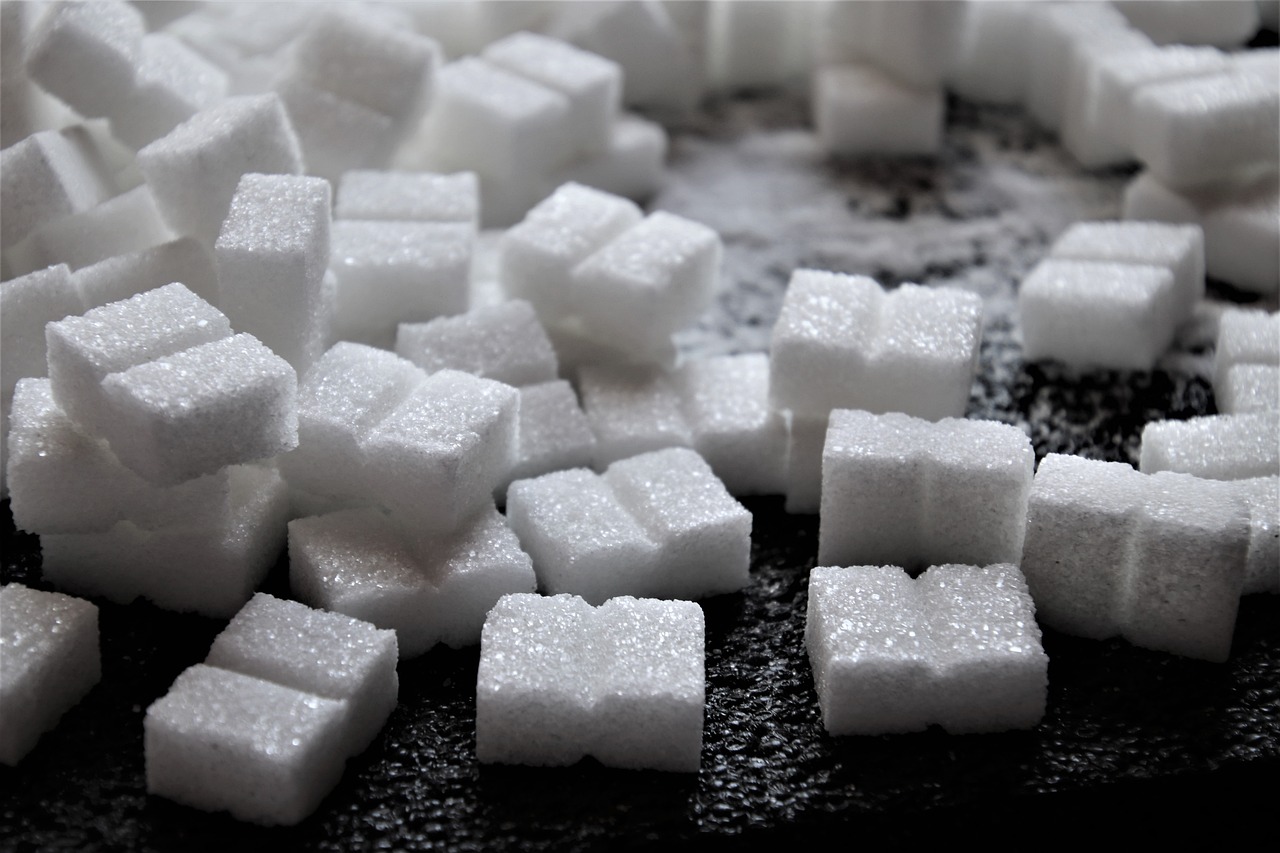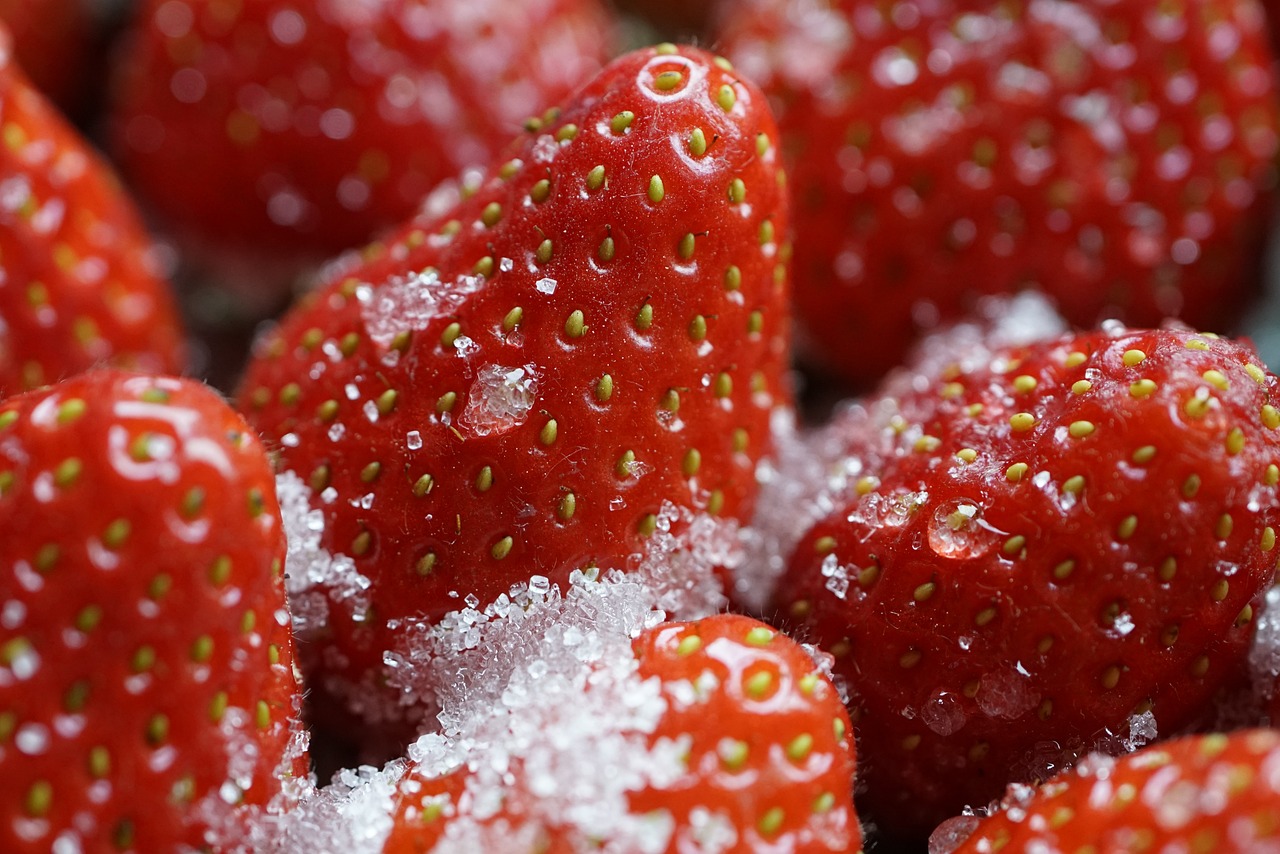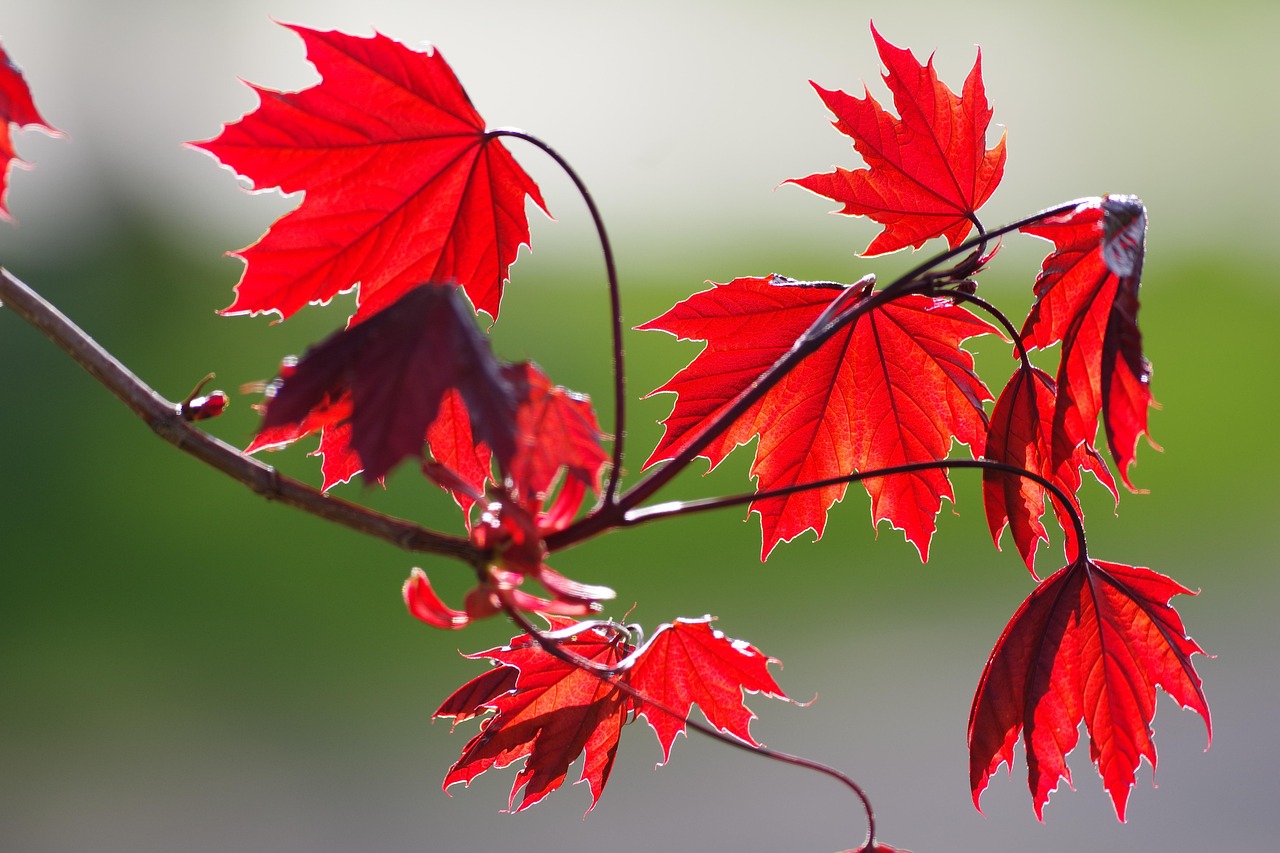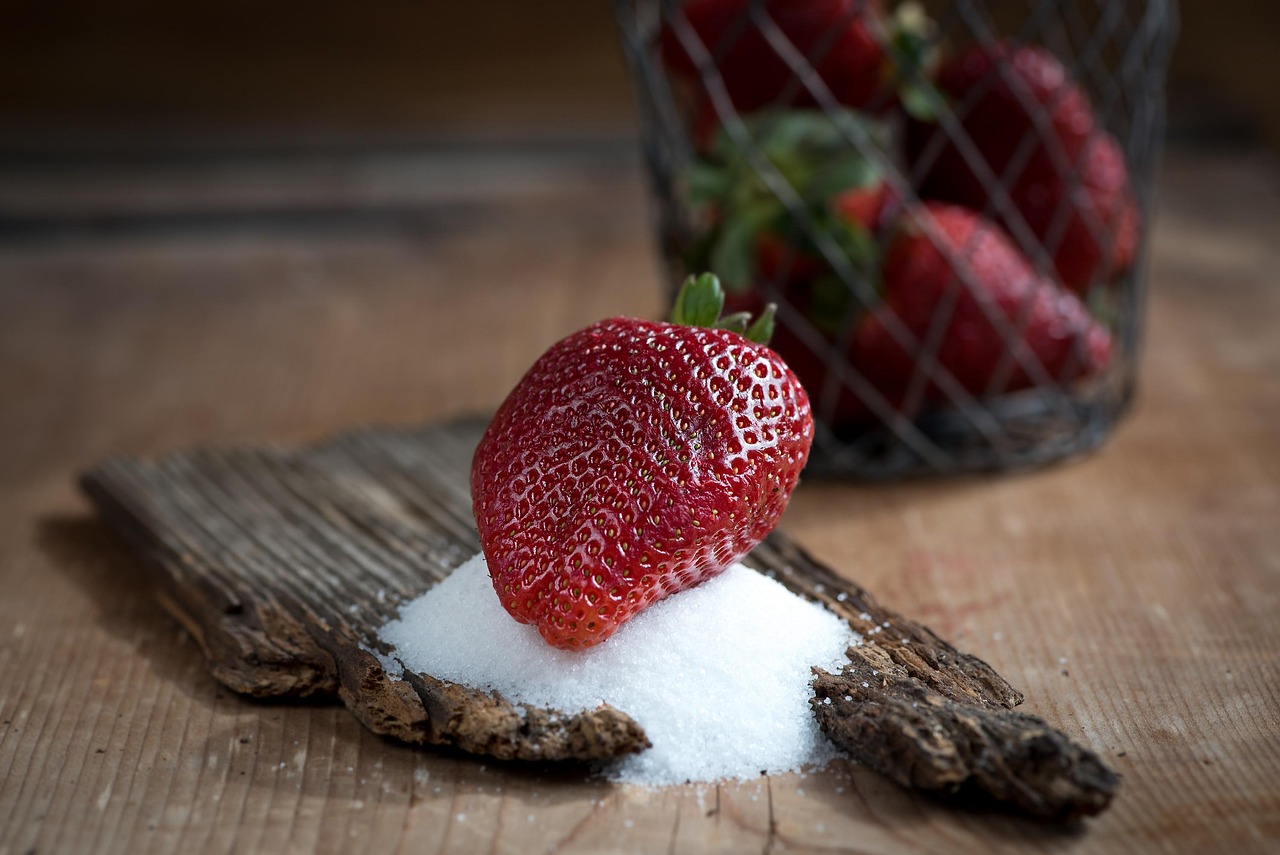Sugar maple trees do not typically grow in Utah due to the state’s arid climate and soil conditions. However, with proper care and in suitable microclimates, it is possible to cultivate them in specific areas.
Understanding Sugar Maple Trees

The sugar maple tree, known scientifically as Acer saccharum, is renowned for its vibrant fall foliage and its role in producing maple syrup. Native to the northeastern United States and parts of Canada, these trees thrive in regions with cold winters and well-drained, fertile soils. Their adaptability to various climates makes them a popular choice for landscaping, particularly in residential areas.
In their natural habitat, sugar maples can grow to impressive heights, often reaching between 60 and 75 feet. They have a broad canopy that provides shade and adds beauty to any landscape. The leaves of the sugar maple are distinctive, featuring five lobes and a striking green color that transforms into brilliant shades of yellow, orange, and red in autumn.
Climate Requirements for Sugar Maples
Sugar maples have specific climate preferences that influence their growth. They flourish in areas that experience:
- Cold winters with temperatures dropping below freezing
- Warm summers that promote healthy leaf development
- Consistent rainfall or moist soil conditions
These conditions are critical for the tree’s health and the production of sap used in maple syrup. The sap flow typically occurs during the transition from winter to spring when daytime temperatures rise above freezing while nighttime temperatures remain low.
Utah’s Climate and Soil Conditions
Utah presents a unique challenge for growing sugar maple trees. The state is characterized by a semi-arid climate that features:
- Hot summers with limited rainfall
- Cold winters, but often with less moisture
- Varied elevation levels leading to microclimates
The soil conditions in Utah can also be a limiting factor. Many areas have alkaline soils that may not provide the necessary nutrients for sugar maples to thrive. Additionally, high winds and intense sunlight can pose further challenges to successful growth.
Potential for Cultivation in Utah
Despite these challenges, some gardeners and landscapers have found ways to cultivate sugar maples in Utah. Key strategies include:
- Selecting the right location with partial shade and protection from harsh winds
- Improving soil conditions through amendments like organic matter or pH adjustments
- Ensuring adequate watering during dry spells, especially during the summer months
Some areas in Utah, particularly at higher elevations or where moisture is more abundant, may provide suitable environments for sugar maples. Understanding local climate patterns and employing effective gardening techniques can increase the chances of success.
Conclusion on Growing Sugar Maples in Utah
The possibility of growing sugar maple trees in Utah largely depends on specific conditions and care. While they are not commonly found across the state, with the right efforts, it is feasible to cultivate them in select areas.
Planting Sugar Maple Trees in Utah
When considering the planting of sugar maple trees in Utah, it is essential to select the right time and method for planting. Timing can significantly affect the tree’s establishment and long-term health. The best time to plant sugar maples is during the early spring or fall when temperatures are cooler, and the tree can establish roots before the stress of summer heat.
Site Selection
Choosing an appropriate site is crucial for the successful growth of sugar maples. Here are some factors to consider when selecting a site:
- Sunlight: Sugar maples prefer partial shade, especially in hotter areas. Planting them near taller trees can provide some relief from intense sun exposure.
- Soil Type: Well-drained, loamy soil enriched with organic matter is ideal. Ensure that the soil has a slightly acidic to neutral pH.
- Water Drainage: Avoid areas with standing water or heavy clay soils that retain moisture, as these conditions can lead to root rot.
Planting Techniques
The process of planting sugar maples involves several steps to ensure successful establishment:
- Prepare the Site: Clear the area of weeds and debris. Dig a hole that is twice as wide as the root ball but no deeper than the ball itself.
- Add Organic Matter: Mix compost or other organic materials with the native soil to enhance fertility and drainage.
- Position the Tree: Place the tree in the center of the hole, ensuring that the top of the root ball is level with the ground surface.
- Backfill and Water: Fill in around the root ball with the amended soil, gently tamping it down. Water thoroughly to eliminate air pockets.
Caring for Sugar Maple Trees
Once planted, sugar maples require ongoing care to thrive in Utah’s unique environment. Proper maintenance ensures healthy growth and vibrant fall colors.
Watering
Regular watering is essential, especially during the first few years after planting. Sugar maples need consistent moisture, particularly during dry spells. Here are some watering tips:
- Water deeply and infrequently to encourage deep root growth.
- Check soil moisture by inserting your finger into the ground. If it feels dry several inches down, it’s time to water.
- Avoid overwatering, as this can lead to root rot.
Fertilizing
Fertilization can promote healthy growth and enhance leaf color. However, it should be done carefully:
- Use a balanced fertilizer in early spring before new growth begins.
- Avoid over-fertilizing, which can lead to excessive leaf growth at the expense of root development.
- Consider soil testing to determine specific nutrient needs.
Pest and Disease Management

Sugar maples can be susceptible to various pests and diseases. Awareness and early intervention are key to managing these issues effectively.
Common Pests
The following pests may affect sugar maples:
- Aphids: These small insects can weaken trees by sucking sap. Monitor for signs and treat with insecticidal soap if necessary.
- Scale Insects: These pests attach themselves to branches and leaves. A horticultural oil spray can help control them.
Diseases to Watch For
Sugar maples may also face diseases such as:
- Leaf Spot: Fungal leaf spots can occur in humid conditions. Remove affected leaves to prevent spread.
- Canker Diseases: These can cause dieback in branches. Prune affected areas and maintain tree health to minimize risk.
By understanding how to plant, care for, and protect sugar maple trees, gardeners in Utah can increase their chances of success with these beautiful trees. Proper attention to their needs will help ensure they thrive in this challenging environment.

Benefits of Growing Sugar Maple Trees
Despite the challenges of growing sugar maple trees in Utah, numerous benefits make them worth considering for gardeners and homeowners. These trees not only enhance the aesthetics of a landscape but also offer ecological advantages.
Aesthetic Appeal
One of the most notable features of sugar maples is their stunning fall foliage. The leaves transform into brilliant shades of yellow, orange, and red, providing a vibrant display that can significantly enhance any landscape. Additionally, their majestic height and broad canopy create a striking visual impact.
Environmental Benefits
Sugar maples contribute positively to the environment in several ways:
- Air Quality Improvement: Like all trees, sugar maples absorb carbon dioxide and release oxygen, helping to improve air quality.
- Wildlife Habitat: The trees provide shelter and food for various bird species and insects, supporting local biodiversity.
- Soil Erosion Prevention: The extensive root system of sugar maples helps anchor the soil, reducing erosion and promoting soil health.
Uses of Sugar Maple Trees
Sugar maples are not just ornamental; they have practical uses that extend beyond their beauty. Understanding these uses can further justify their cultivation.
Maple Syrup Production
Sugar maples are famous for producing maple syrup. The sap collected from these trees is rich in sugar content, making it ideal for syrup production. Here are some key points regarding this process:
- The best time to tap sugar maples is late winter to early spring when temperatures fluctuate above and below freezing.
- One mature tree can produce approximately 10 to 20 gallons of sap in a season, which can yield about one quart of syrup.
- Harvesting sap requires specific equipment, such as taps, buckets, and evaporators, to transform sap into syrup.
Wood Characteristics
The wood of sugar maple trees is highly valued for various applications:
- Furniture and Cabinetry: The wood is known for its durability and fine grain, making it an excellent choice for high-quality furniture.
- Flooring: Sugar maple wood is often used in hardwood flooring due to its strength and aesthetic appeal.
- Musical Instruments: The wood is also favored in crafting instruments like pianos and guitars, known for producing excellent sound quality.
Challenges and Considerations
While the benefits of growing sugar maples are significant, there are challenges that potential growers must consider. Understanding these challenges can better prepare gardeners for success.
Climate Limitations
The semi-arid climate of Utah presents unique challenges for sugar maples. As previously mentioned, these trees thrive in regions with abundant moisture. Gardeners may need to implement specific strategies to mitigate these limitations:
- Irrigation Systems: Installing an efficient irrigation system can help ensure consistent moisture levels.
- Mulching: Applying mulch around the base of the tree can help retain soil moisture and regulate temperature.
Pest Management
Pest management is crucial for maintaining healthy sugar maple trees. Regular monitoring and proactive measures can prevent infestations from becoming severe:
- Regular Inspections: Frequently check the leaves and branches for signs of pests or disease.
- Natural Predators: Encouraging beneficial insects, such as ladybugs, can help control pest populations without chemicals.
Conclusion on Long-Term Care
The long-term care of sugar maple trees requires commitment and knowledge. By understanding their needs and challenges, gardeners can create an environment where these majestic trees can thrive in Utah’s unique landscape.
Additional Considerations for Sugar Maple Cultivation

While the previous sections have covered planting, care, and the environmental benefits of sugar maple trees, there are additional factors to consider for successful cultivation in Utah. These considerations can further enhance the growth potential and health of these trees.
Microclimate Awareness
Understanding microclimates in your area is crucial for planting sugar maples. A microclimate is a small-scale climate that differs from the surrounding area. Here are some tips for identifying and utilizing microclimates:
- Elevation: Higher elevations may provide cooler temperatures and more moisture, making them suitable for sugar maples.
- Wind Protection: Locations sheltered from strong winds can help reduce stress on young trees.
- Proximity to Water Sources: Areas near lakes or rivers may have higher humidity levels, benefiting tree growth.
Community Resources and Support
Engaging with local gardening communities and resources can provide invaluable support for those looking to grow sugar maples. Consider the following options:
- Local Extension Offices: These offices often provide resources, workshops, and expert advice on tree care and pest management.
- Gardening Clubs: Joining local gardening clubs can connect you with fellow enthusiasts who share tips and experiences.
- Online Forums: Participating in online gardening forums can offer advice from experienced gardeners across various climates.
Final Thoughts
In conclusion, growing sugar maple trees in Utah presents unique challenges and opportunities. While the state’s climate may not be ideal for these trees, with proper care, attention to soil conditions, and effective pest management strategies, it is possible to cultivate them successfully. The aesthetic beauty, environmental benefits, and practical uses of sugar maples make them a worthwhile addition to any landscape.
By understanding their specific needs and employing effective gardening practices, enthusiasts can enjoy the vibrant colors and numerous advantages of sugar maples. Whether you are harvesting sap for syrup production or simply appreciating their beauty during autumn, these trees can thrive in the right conditions. With dedication and knowledge, gardeners in Utah can create a flourishing environment for sugar maple trees, contributing to both the local ecosystem and personal enjoyment.
As you embark on your journey of growing sugar maples, remember to stay informed about best practices and community resources available to you. With the right approach, you can create a stunning landscape that showcases the beauty of these remarkable trees.
